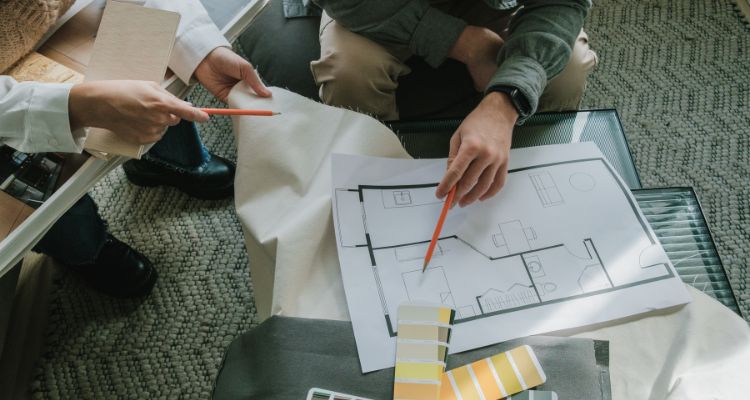Architect in Delhi: Innovating with Technology and Design

It has been enlightening to observe how the architectural culture has changed in contemporary India, both as a profession and a way of life. We never realised how much architecture and design might influence not just the society and culture in which we live, but also how deeply symbolic they would come to represent our attitudes and values.
Different architects in Delhi have contributed to the creation of unique architectural styles in the city as a result of the city’s massive development and creative technological advancements.
Delhi is greatly influenced by its architects as in the busy metropolis of Delhi modernity and tradition collide. Architects in Delhi play a crucial role in shaping Delhi’s landscape. Delhi’s architects are at the forefront of fusing technology and design to create places that are both visually beautiful and useful, from tall buildings to creative urban planning.
Overview of the importance of architects in Delhi:
Delhi is a city where space is limited and the population is constantly increasing. The significance of architects’ work is paramount. Architects not only contribute to the city’s overall aesthetic appeal but they also create structures and areas that accommodate people’s requirements. Whether they are creating public areas, commercial structures, or residential complexes, Architects in Delhi are essential to defining the character of the city.
Technological Innovations in Architecture:
Architects in Delhi are using new tools and methods so that they can enhance their designs with advancements in technology. technology has completely changed how architects plan and carry out their work With the advent of virtual reality simulations and 3D modeling tools.
Architects in Noida are creating more accurate designs to expedite the building process, and reduce mistakes with the use of these tools which will eventually lead to better outcomes for both communities and clients.
The practice of architecture has undergone a fundamental transformation because of technological advancements, which now enable architects to create more creatively, sustainably, and efficiently than ever before.
To define future designs and construct buildings Architects in Noida have an abundance of tools and technology at their disposal. These buildings are sensitive to societal requirements, ranging from robotic manufacturing and virtual reality to digital modelling and artificial intelligence.

Integration of Sustainable Design Practices:
Recently we have observed that emphasis on sustainability in designs is increasing day by day and Delhi is hardly an exception to this. The use of sustainable design principles in architecture has grown in significance in light of environmental deterioration and climate change.
To produce environmentally sustainable, socially responsible, and commercially viable buildings and spaces architects are incorporating sustainability ideas into their designs.
Employing eco-friendly materials, putting in place energy-efficient systems, and making the most of natural light and ventilation are Sustainable design practices and are becoming more and more common among office interior designers in Delhi.
Architects that prioritise sustainability not only lessen the buildings’ negative effects on the environment but also make their interiors healthier and more comfortable for the occupants.
Digital Tools and Visualization Techniques:
One of the biggest developments in architecture is the creation of digital tools and visualisation methods. Architects in Delhi are able to produce incredibly accurate models and representations of their projects because of the availability of tools and software. This not only makes the finished result easier for clients to grasp but also enables architects to test out many ideas and concepts before settling on a final design.
Smart Architecture and Urban Planning:
As Delhi is expanding and changing, architects are becoming more and more interested in developing smart, sustainable cities of the future. Planning entire urban landscapes and developing structures to optimise efficiency is not the only thing included in this but this also includes reducing negative environmental effects and improving the quality of life for locals.
Architects in Delhi are striving to design cities that are not only practical but also pleasurable to live in, with features like pedestrian-friendly neighbourhoods and integrated transit networks.
Case Studies of Innovative Architectural Projects:
There are a number of creative architectural projects in Delhi which exemplify the city’s commitment to design brilliance and innovation. These designs, which range from the recognisable Lotus Temple to the cutting-edge Metro stations, highlight Delhi’s architects’ inventiveness and innovation.
Initiatives like the reconstruction of sustainable housing complexes and the revitalization of Connaught Place demonstrate the city’s commitment to maintaining its legacy while embracing modernity.

Future Trends and Challenges:
Interior designers in Ghaziabad may face a wide range of problems in the future. Social inequality, environmental deterioration, and rapid urbanisation are just a few of the problems that architects or interior designers may face as they continue to create the future of the city.
But because of technological developments and a rising consciousness of sustainability, architects are in a strong position to take on these problems head-on and design thriving, resilient communities.
Conclusion:
In conclusion, through their creative use of technology and design, the future of the city is significantly influenced by the Architects in Delhi. Architects are putting in endless effort to design environments that not only fulfil the demands of the present but also foresee the difficulties of the future.
Using sustainable techniques and clever urban planning are all included in this. Architects will play an increasingly important role in developing cities that are not just aesthetically pleasing and practical, but also sustainable and welcoming to all as Delhi develops.
